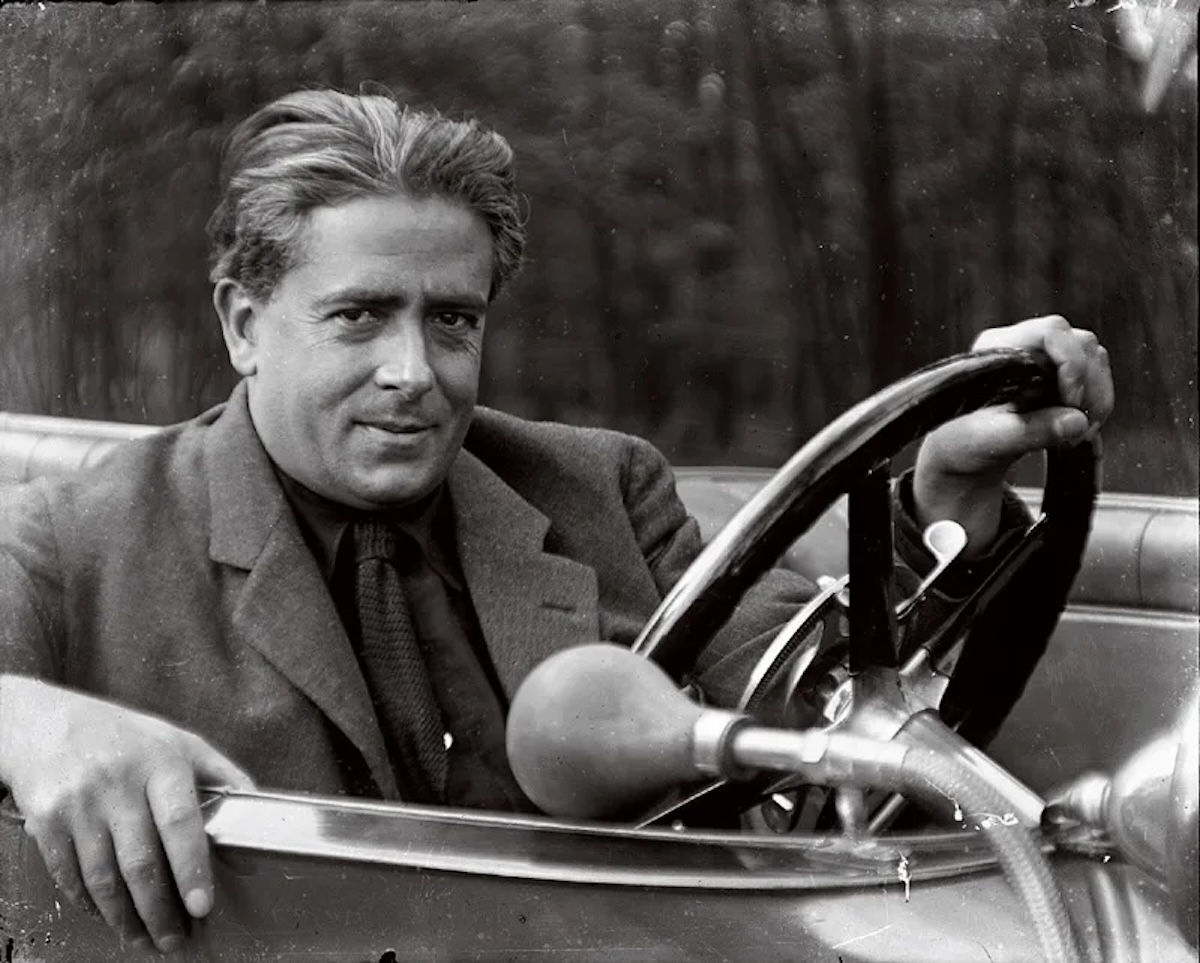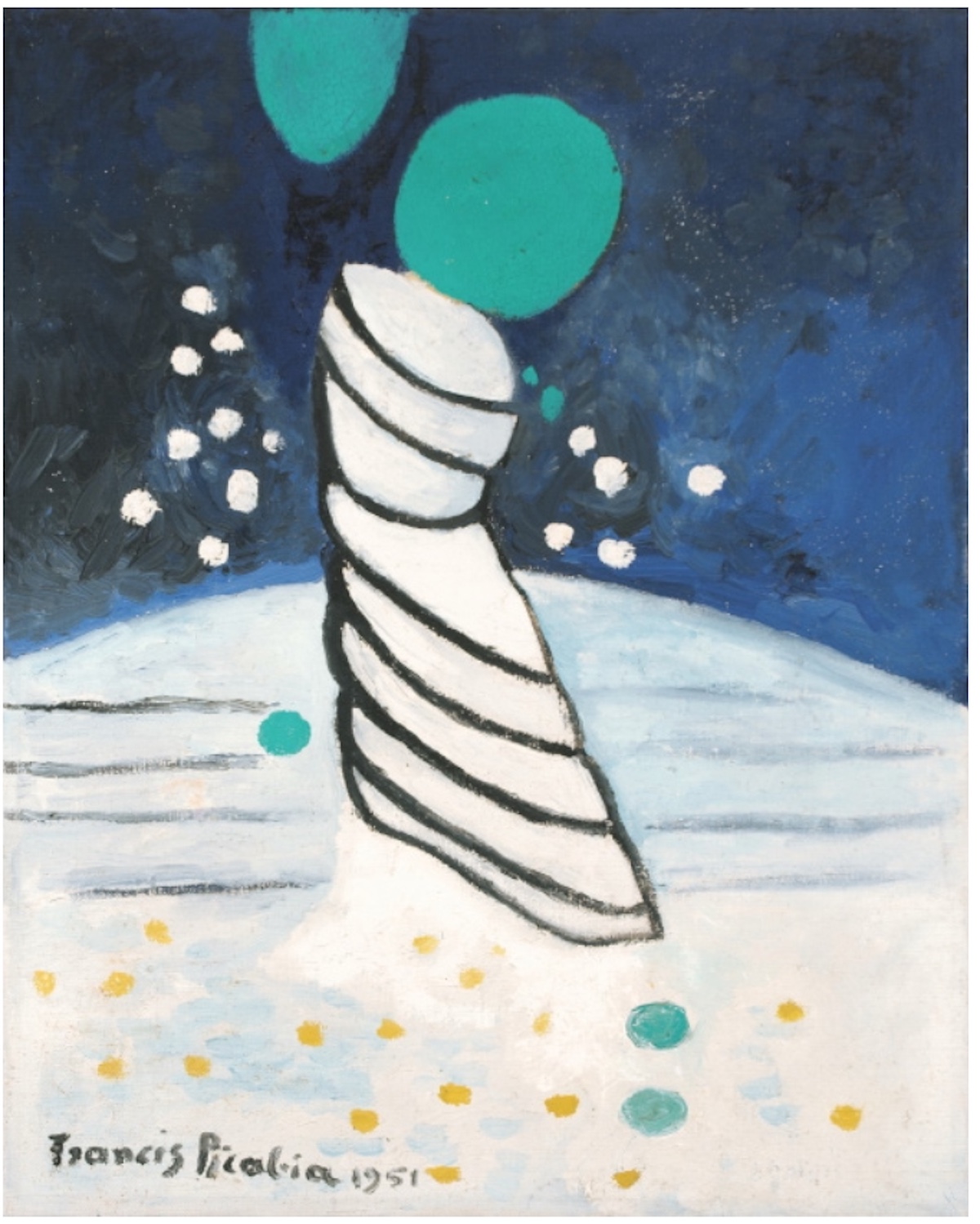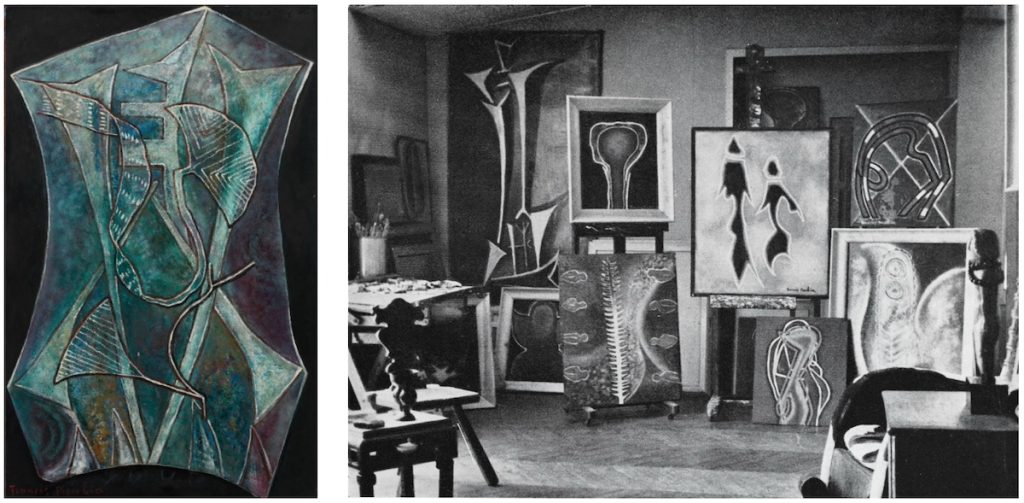The work of the renowned and innovative Francis Picabia (1879 – 1953) is canvased to engage the attention of art lovers with a new exhibition titled “Francis Picabia. Eternal Beginning,” which will open on May 1, 2025, at Hauser & Wirth New York on 22nd Street. The exhibition features nearly 30 pieces from 1945 to 1952 that highlight Picabia’s unique style, characterized by bold layering and experimentation, along with a playful challenge to traditional art forms.
Francis Picabia at Hauser & Wirth: A Focus on Final Years
Returning to Paris in 1945, Francis Picabia found himself contending with challenging personal circumstances and a rapidly changing art scene. Disillusioned with surrealism yet still drawn to the movement’s embrace of the unconscious, Picabia envisioned a “third path” that would balance abstraction’s raw energy and surrealism’s imaginative depth. During these final years, he consistently revisited earlier canvases, painting over them with fresh motifs. Recent X-ray imaging reveals how he layered new forms atop underpaintings from his Dada era or even compositions from his beguiling “Transparencies.” The result is a body of work that defies easy categorization while showcasing Picabia’s unwavering resolve to stay ahead of the artistic curve.

One of the central revelations in this period is how Francis Picabia gleaned material from medieval manuscripts and his own past imagery. Pieces like “La terre est ronde (The Earth is Round)” (1951) borrow forms from tenth-century Romanesque illustrations, blending ancient symbolism with dot-laden surfaces reminiscent of his postwar abstract approach. Combined with influences from sources as diverse as Spanish art catalogs and Nietzschean phrases, Picabia developed an iconoclastic visual language rooted in collaboration, appropriation, and brazen creativity. His penchant for revisiting older artworks—sometimes partially obscuring them under thick impasto—solidified a reputation for constant renewal and willful contradiction.
By 1952, the penultimate year of his life, Francis Picabia had fully embraced painting as both a playground for formal experimentation and a stage for bold conceptual statements. Echoes of neo-Dada impulses mixed freely with allusions to prehistoric cave art and gestural abstraction, placing him within the broader art informel circle of postwar Paris.

Francis Picabia. Eternal Beginning: A Lasting Legacy
“Francis Picabia. Eternal Beginning” at Hauser & Wirth brings together a significant set of these late pieces, reinforcing the artist’s place among the pioneers of twentieth-century modernism. Accompanied by a new bilingual catalogue featuring essays by Beverley Calté, Arnauld Pierre, and Candace Clements, this exhibit promises to reveal unexplored facets of Picabia’s evolving genius and to confirm his position as a preeminent force in shaping contemporary aesthetics.
Discover more from artsXhibit
Subscribe to get the latest posts sent to your email.

